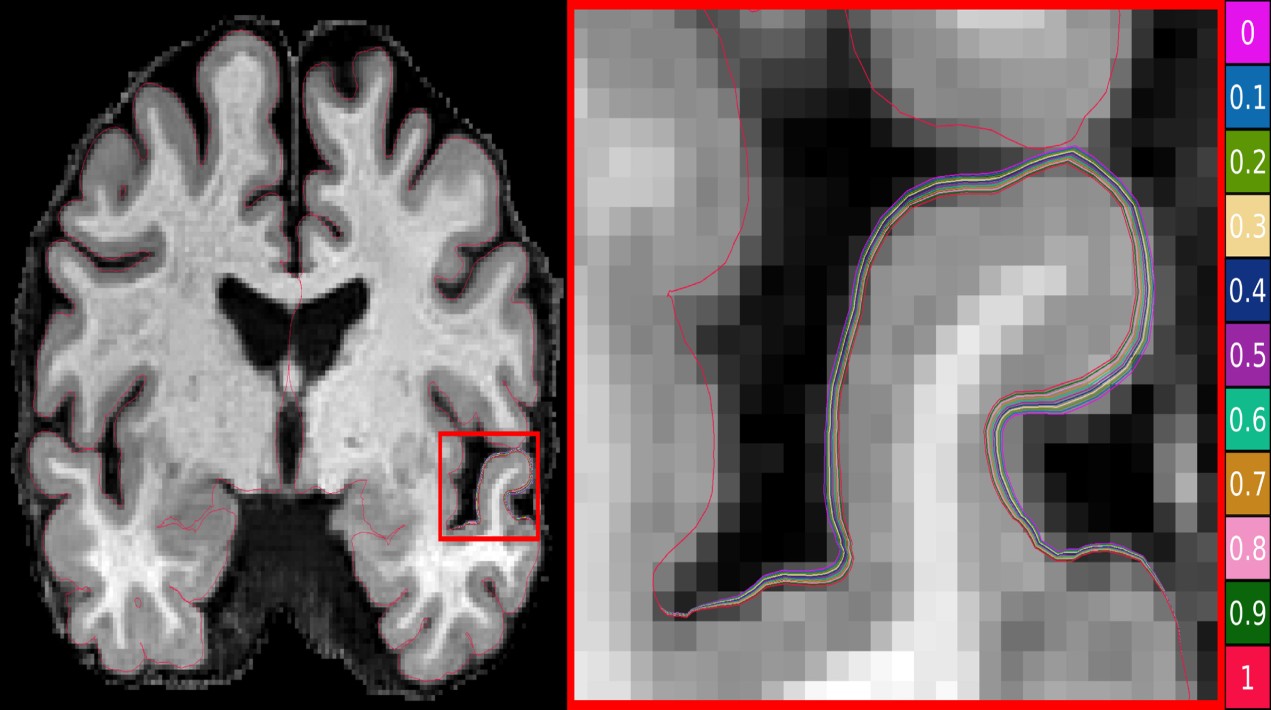
CSIRO, Australia’s national science agency, in collaboration with the Queensland University of Technology, has utilised artificial intelligence to create a ground-breaking benchmark for determining brain atrophy in neurodegenerative diseases, including Alzheimer’s.
The benchmark will provide a reliable standard for measuring the extent of brain thinning, which is a significant indicator of the progression of these diseases. This is a significant advancement in the field of Alzheimer’s research, as it will enable scientists to have a more accurate and consistent method for tracking the disease’s progression and testing the efficacy of potential treatments.
Alzheimer’s is the most prevalent type of dementia, responsible for 60% to 80% of all cases. A way to track its progression is through MRI images, which display cortical thinning. However, measuring changes in the cortex’s thickness is difficult as they are usually very small, sometimes even in the sub-millimetre range.
Assessing Alzheimer’s using MRI has been difficult because changes in the cortex’s thickness are usually tiny, sometimes even sub-millimetre.
Machine learning has been used in brain research to measure changes in cortical thickness, but without a clinically accurate “ground truth” dataset, it was impossible to evaluate their ability to detect small atrophy levels.
Before this development, the only way to measure cortical thickness was through post-mortem examination, but this method is unreliable as brains start to shrink immediately after death.
Filip Rusak, a research scientist from CSIRO’s Australian e-Health Research Centre, stated that brain cortex thinning (cortical atrophy) can begin up to ten years before Alzheimer’s symptoms appear. He noted that accurate methods are necessary to detect these signs in brain images at an early stage so they can be addressed sooner. Before these results, there was no definitive method to assess the sensitivity of various techniques used to measure cortical thickness in Alzheimer’s patients.
This new method enables researchers to determine the amount and location of brain degeneration and compare it, allowing them to determine the best technique for cortical thickness quantification.
The research findings were published in the journal “Medical Image Analysis” and have already received international recognition.
Michael Rebsamen from the University of Bern, Switzerland, stated that the deep learning-based method for measuring cortical thickness, DL+DiReCT, has robust evidence of being sensitive to slight changes in atrophy. Previously, due to the absence of a reference MRI, it was impossible to determine the level of atrophy that could be accurately measured.
This new benchmarking technique developed by CSIRO and Queensland University of Technology is a major step forward in the field of Alzheimer’s research. The traditional methods of assessing brain atrophy via MRI images have been challenging due to the small size of changes in the thickness of the brain’s cortex, often in the sub-millimetre range.
The use of advanced machine learning techniques has made it possible to produce a set of artificial MRI images of brains with pre-defined signs of neurodegeneration in the cortex region. This new method enables researchers to determine the amount and location of brain degeneration and compare it to different methods for measuring cortical thickness, allowing them to determine the best technique for cortical thickness quantification. This technique can evaluate method sensitivity at a very small level, even determining if a method can detect thickness changes as small as 0.01 millimetres. The innovative benchmark from CSIRO closes the gap in previous limitations and is a crucial milestone in evaluating cortical thickness methods in the fight against Alzheimer’s disease.
CSIRO’s benchmarking technique for measuring brain atrophy can improve understanding of neurodegenerative diseases and predict progression of cortical degeneration in individuals. It can also be applied to research on any brain disease involving neurodegeneration. A major step forward in dementia and other brain disease research.
The development of this benchmarking technique used commonly available and cost-effective MRI images. The results will assist researchers in selecting appropriate methods for accurately measuring disease progression, improving chances of success.
The AI-generated dataset has been made publicly accessible, enabling clinicians and researchers to use it to evaluate cortical thickness measurement techniques.
















